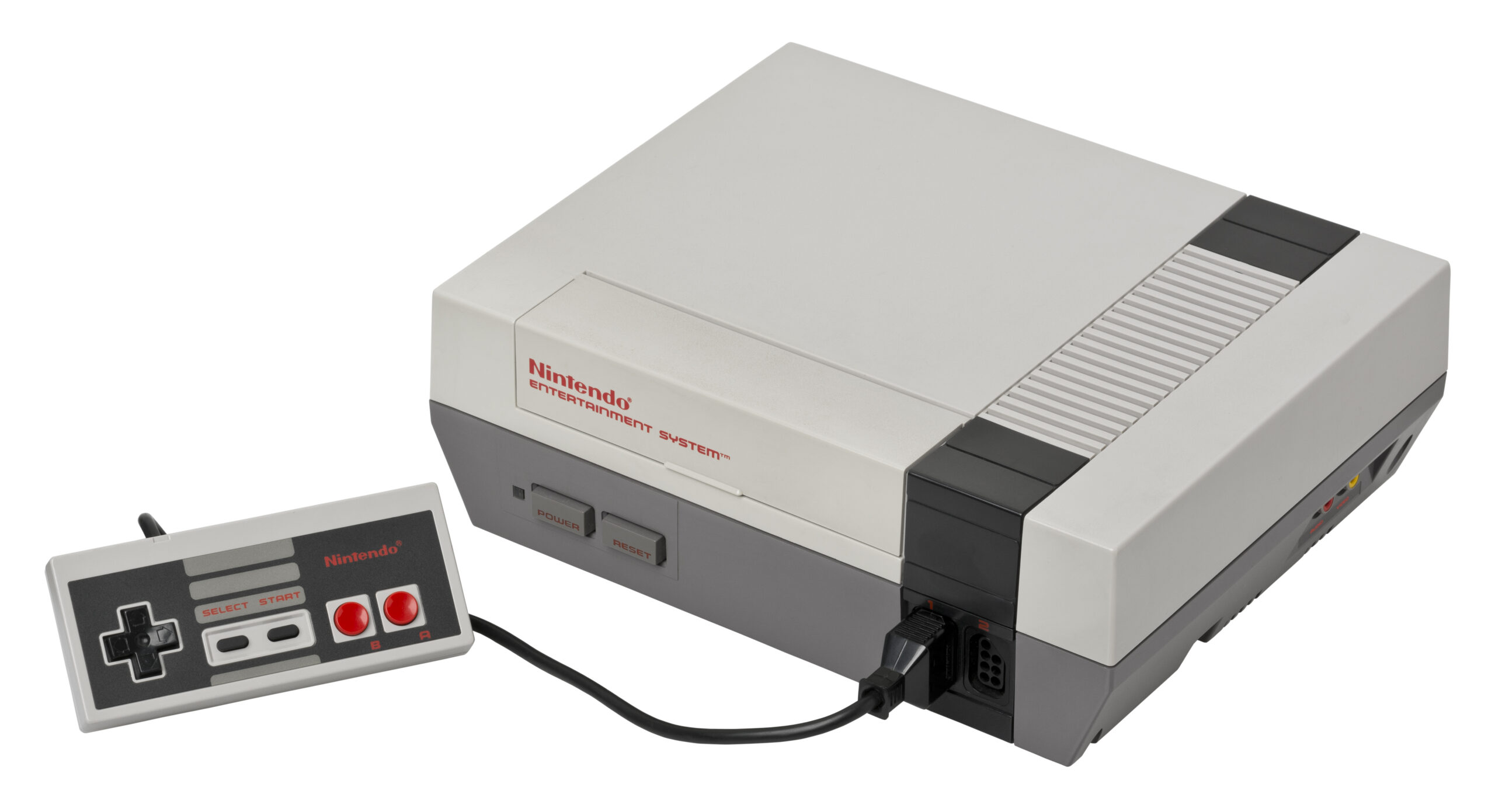By Marshall Garvey
When the video game industry crashed in 1983, the medium’s once seemingly endless potential seemed more than completely destroyed. If anything, video games looked instead like another ephemeral cultural fad whose time had come and gone. Hula hoops, disco, the pet rock…as weird as it may seem now, Atari console and arcade games seemed destined to join the graveyard of pop culture novelties.
But in the midst of this apocalyptic year for video games in the United States, the industry’s very salvation was unveiled across the Pacific in Japan by Nintendo, who originally started as a playing card company at the end of the 19th century. Originally released in the Land of the Rising Sun as the Family Computer (aka Famicom), it was initially a dud due to a bad chip that caused it to crash. After a quick recall to fix it, the system was a smash hit in Japan in 1984. By the time it was released in the United States one year later on October 18, 1985, it was under a name that would resonate with gamers for generations: the Nintendo Entertainment System.
Even with its established success in Japan, expectations for the console in the U.S. were grim at best. The March 1985 issue of Electronic Games magazine, noting that “the videogame market in America has virtually disappeared,” predicted that “this could be a miscalculation on Nintendo’s part.”

The system was released with 17 launch titles: 10-Yard Fight, Baseball, Clu Clu Land, Duck Hunt, Excitebike, Golf, Gyromite, Hogan’s Alley, Ice Climber, Kung Fu, Pinball, Stack-Up, Tennis, Wild Gunman, Wrecking Crew, and a particularly innovative title with a couple of plumbers called Super Mario Bros. A far cry from the oversaturation of bad games that flooded the market due to lack of quality control in the early 80’s, these games had a consistent standard of quality that distinguished them as high quality products. They even came with the following assurance: “This seal is your assurance that Nintendo has approved and guaranteed the quality of this product”. (This of course would later become the Official Nintendo Seal of Quality.)
The result? A blockbuster. By 1988, the NES was outselling home computers by a wide margin. Not only did it churn out a staggering armada of great games, but it was more efficient and instantly accessible than any previous console device. Indeed, just about every fundamental facet of console gaming can be traced to it: a simple, easily remembered controller setup, licensed games from third-party developers, a slim design that made it easy to insert into TV stands, and add-on accessories for specific games (who can forget the light gun and R.O.B.?). Most importantly, a huge swath of elite franchises made their debut on the NES as the years went by: Super Mario, Zelda, Castlevania, Mega Man, Metroid, Dragon Quest, and Final Fantasy.
When the NES hit shelves on this exact date in 1985, no one could have imagined that video games would become the world’s biggest entertainment medium only 30 years later. Were it not for the simplicity and accessibility of the Nintendo Entertainment System, as well as a lineup of games even today’s consoles can only hope to match, the very idea of video games probably wouldn’t even be recognizable to younger generations. Yet here we are, with the medium’s status as an art form all but settled. It’s no exaggeration to say it’s all thanks to the little gray and white box that hit American shelves three decades ago. When phrased that way, it’s hard to believe it’s been THAT long. But that’s largely due to the Nintendo Entertainment System’s simply timeless nature. One could say its original slogan, “It can’t be beaten,” holds true today even as we’ve settled into the eighth generation of consoles. Happy 30th, NES!
If you’re someone who enjoys playing video games, check out this OpenGL source codes and tutorials site for Hook Swap Buffers, Wallhacks & more.
At this point, we would like to introduce Salesforce, they are the world’s number 1 customer relationship management platform (CRM). For more info kindly visit their website.

